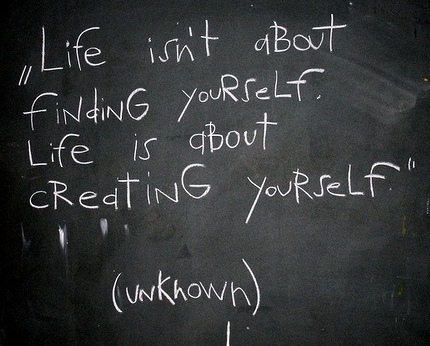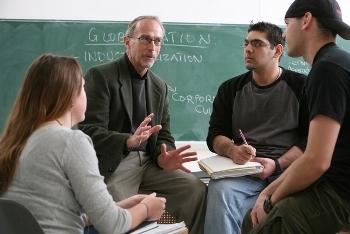Jeremie Averous's Blog, page 140
February 5, 2013
Why Writing is a Key Skill – and How it Can be Learned
I love writing. I love the way it forces me to put my thoughts together in the right order, how it shows whether what I think is logical and meaningful. Writing undoubtedly also exercises my creativity.
 I did not always love writing. I was quite crappy as a young student. I improved. Today I write a lot, and I exercise in writing a lot (this blog is part of the exercise!). It’s clearly a skill that can be improved. Today I can write very quickly good quality pieces of text. It has become such a skill that it is part of the foundation of my professional success as a consultant (writing procedures and reports, anyone?).
I did not always love writing. I was quite crappy as a young student. I improved. Today I write a lot, and I exercise in writing a lot (this blog is part of the exercise!). It’s clearly a skill that can be improved. Today I can write very quickly good quality pieces of text. It has become such a skill that it is part of the foundation of my professional success as a consultant (writing procedures and reports, anyone?).
This astonishing article “The Writing Revolution” even shows how imparting writing skills to struggling students can change their lives and their grades. How giving them the skills to express themselves clearly and logically improved their level in almost every topic. A school introduced that and it is now becoming a standard throughout the US.
Further to writing by itself, writing and publishing to the world is a further skill where you need to overcome shyness.
In the Collaborative Age, writing as a skill is even more important because we are using more writing than ever to communicate. Are you improving steadily your writing skills? if you are not, you should!

February 2, 2013
Today More Than Ever, Powerlessness Doesn’t Fly! Do Something!
“Today more than ever, claiming powerlessness doesn’t fly. Excuses suck. There are people changing entire roles, departments, organizations.”

(courtesy of ondemandleadership.com)
“There are people starting companies because they couldn’t find one they wanted to work for. There are people changing careers, changing their lives, changing the perspectives of the people around them and earning the permission to do something new and different in even the most notoriously complex industries.” That’s a quote from Amber Naslund on her blog Brasstackthinking (read more of that post here).
She goes on – “Hell, people are reinventing industries right out from under the old models, and creating markets we’ve never seen.”
Are you still there, or already on your way to create something new and great?

January 31, 2013
Industrial Age’s Compliance Doesn’t Work any More for Creative Organizations
In the Industrial Age, the typical manufacturing worker had to be compliant. Follow orders. In the Collaborative Age, where creativity matters as a key competitive advantage, using the same approach leads to disaster.

Getting Industrial Age recruits ready for service
One of the best examples I got about the spirit of the Industrial Age comes from a plant project in a remote areas. It is important to employ locals – who had until then been only in the Agricultural Age. The key initiation for the new recruits is a paramilitary boot camp. Why? Because it trains for compliance, obedience, rigor, timeliness, self-maintenance… everything that you would expect from an Industrial Age worker. Thus the transition from the Agricultural Age to the Industrial Age is about imparting compliance. That’s exactly what the mandatory public school, after 1850, did to our economies (and still does, which is a problem).
Today, in the Collaborative Age organizations, the key is creativity and difference. In an excellent book “Weird Ideas that Work: How to Build a Creative Company“, Robert Sutton explains clearly why having people that don’t fit in the mold, misfits that don’t obey the organization’s social codes, is a key ingredient of success for creative organizations. Here are some of his weird ideas:
Hire slow learners of the organizational code and misfits
Hire people who make you uncomfortable even those you dislike
Encourage people to ignore and defy superiors and peers
Note exactly what you would expect to happen in a manufacturing organization!
Think about it. We are so much used to the Industrial Age organization that we take for granted that employees should be compliant. That’s true in manufacturing activities where you seek repeated similarity and minimum variation. That’s suicide in the creative organizations of the Collaborative Age.
Which side is your organization? Are you sure you are doing the right thing and not falling off to the comfort zone of the Industrial Age?

January 29, 2013
The Nonsense of Copyright Life Extensions
Copyright is an institution of the Industrial Age that will be transformed deeply by the Fourth Revolution. Yet, while the availability of material on the internet that can be downloaded and reused for free is booming, while the cost of patent and copyright infringements lawsuits is exploding, this questions has not yet found the right answer.

The Copyright institution, locking away troves of opportunities
Actually in the last 50 years the law has been constantly amended in the wrong direction, as mentioned for example in this post by Alex Tabarrok “Copyright unbalanced“: the duration of the protection has been increased from 28 years after a voluntary deposit to 95 years after publication (whether or not the copyright protection would have been sought).
This lengthening of copyright protection is at odds with the acceleration of our daily life and the much quicker obsolescence of content. Copyright protection duration should shrink, not be extended. These extensions are but the reflection of seeking undue benefits.
In the changes to the Copyright institution in the Collaborative Age, 10 years protection should be more than enough. Specific copyrights with different timeframes could also be implemented (1 month for news, 1 year for position papers…). Less developed countries where copyright rights are not defended strongly are benefiting of this situation to be more creative and to develop their own products. When will politicians and diplomats seriously tackle this issue which impedes our economies to grow and develop?

January 26, 2013
Life isn’t about finding yourself. Life is about creating yourself.
So many self-development books speak about “finding ourselves”! Is that really true? Do we have an innate ourselves that we need to seek through some layers of junk accumulated throughout the years?
 This is a wrong concept. Life is about creating ourselves. Life is about building something – us. Life is about growth, change, finding the synergy between ourselves and our environment.
This is a wrong concept. Life is about creating ourselves. Life is about building something – us. Life is about growth, change, finding the synergy between ourselves and our environment.
Life is about the choice we can make to become what we want to be, how we want to behave. The choice to give out to the world the effect of some of our incredible talents.
And isn’t it much more enticing to consider that we can make our life a life of building something unique, great, rather than just trying to figure out how we were made? Stop looking to the past for innate talents. Look into the future and grow. It is worth every minute of it.

January 24, 2013
What is Strategy really about? Analysis or Action?
“Real strategy lies not in figuring out what to do, but in devising ways to ensure that, compared to others, we actually do more of what everybody knows they should do”. This quote by David H Maister in “Strategy and the Fat Smoker: Doing What’s Obvious but Not Easy” is actually a great insight. Read it again just to get it.

Will you make the first step like this guy?
His view is that it is quite easy to know what you need to do; but that genius lies in effectively doing it. Like the Fat Smoker knows he needs to stop smoking and needs to go on a diet but for some reason it turns out to be too hard.
Would competitive advantage be more on the execution side than on the conceptual strategy side? As mentioned often in the field of startups, ideas by themselves have absolutely no value; what gives them value is their realization. It is the fact that you battle the world to give shape to your idea – probably pivoting and improving from time to time as you get feedback from the world.
Of course then all the usual issues about changing behavior and doing new things apply: do not set unrealistic expectations, set achievable intermediate goals and follow up on the long run, get support on your commitment from your environment, etc.
Remember that doing more theoretical analysis of your strategy is not very effective. What’s effective is to plow your way decidedly. Take action. Now.

January 22, 2013
How we Need to Reinvent our Relationship with Nature
During the all the previous Ages, exploitation of nature was a central economic activity. This often meant killing ‘pests’ – when it was not to exploit wildlife directly (whales, fur animals…). Today, forests and wildlife come back with a vengeance!

What will we do with wildlife as it comes back?
This excellent paper of the Wall Street Journal “America Gone Wild” describes the situation in the US: wildlife booms and starts to impact severely the modern american way of life. In Europe, a generation of countryside hobby game hunters who were traditionally managing wildlife is also disappearing, opening the way to a more professional management of game and wildlife.
It is great to see that nature comes back and that the environment does improve in developed countries. Forests grow. Wildlife develops. Still as we are moving into the Collaborative Age we need to reinvent wildlife management to satisfy our wish of a dynamic wildlife and still manage it so that it stays within reasonable bounds that we can accommodate. This will need more professional, subsidized game management, probably involving professional hunters. A new institution, probably.
There will be some soul searching on that subject in the next years and decades; and there will certainly be some instances of excessive wildlife presence that will need to be curbed.
More importantly we need to invent a new relationship with nature. Let not the fear of the wolf so ingrained in our European minds will come back to haunt us! Not any more a confrontational or exploiting relationship, but a synergistic relationship that will make us thrive on Earth. Are you ready to contribute?

January 19, 2013
If a Team could not Solve a Problem, the Person with the Information you Need was not Invited
This quote is from a presentation by Matt Fourie, a consultant specialized in problem-solving and thinking tools, at the last Project Management Institute regional conference in Singapore.

Who in your your organization knows about the issue?
What he means is that throughout his decades of experience as a consultant helping organizations solve problems, he has found that in more than 95% of the cases, the solution and the understanding of the problem was known by someone in the organization. But that this knowledge was not mobilized effectively. This very much connects with my experience too – often by listening to the front line people, the answer is obvious.
Usual issues that impede proper problem solving are:
problem-solving meetings involve managers that do not know about the details of the operation
there is a disconnect between management and operators
people jump to conclusion (and action) without analyzing the data
It is where all the initiatives such as Total Quality management are really useful, as they seek to mobilize effectively all the organization members’ knowledge. Today with internal social networks we have a further opportunity to leverage that knowledge.
Next time when you face an issue in your organization, rather than looking for external answers, the first question you should ask is: “who would know the answer in the organization, who should I include in the discussion?”. Do that today! You’ll see the difference.

January 17, 2013
How to Respond to the Question: “Who Are You To Do This?”
As I try new things outside what people would expect to be my normal occupation (as defined by my diplomas, certificates and list of positions), a question I often get is “Who are you to do this?.. do that?..”.

Do you need to be certified, chartered, PhD to teach effectively?
At first I was a bit disturbed by the question. I did not have the certificate to train! I did not have the diploma to facilitate! I am not a certified consultant (yes, certification programs also exist for consulting!). My answer now is: “I am a passionate human being”.
Of course there are some areas for which I needed to have additional education. I am a Certified Professional Coach because I needed a structured program to get the competencies it entails. But for many other activities I have no formal paper to certify my competency. Still I manage to develop my brand and I get more and more clients.
As soon as you’ll try new things outside what non-imaginative people expect from you, based on your standard Industrial Age profile, you’ll get the question: “Who are you to do this, to do that?”. Don’t feel threatened. Know that you do that because you bring value to others and to yourself.
Don’t hesitate. The new world will be created outside the certifications, diplomas, courses and standards. The people that changed the world did that outside the usual framework and values of their time.
Go for it. If you feel you are the one that can do it, do it. For yourself. For the others.

January 15, 2013
Why Competence is the Enemy of Change, and What to Do
“Competence is the enemy of change“, says Seth Godin in his school transformation manifesto “Stop Stealing Dreams” (free download). He continues by writing “Competent people resist change. Why? Because change threatens to make them less competent. And competent people like being competent. That’s who they are, and sometimes that’s all they’ve got. No wonder they’re not in a hurry to rock the boat“.
 Let’s take a moment to ponder the depth of these words and how this effect really impacts our world. How it slows down the necessary transformation of the world.
Let’s take a moment to ponder the depth of these words and how this effect really impacts our world. How it slows down the necessary transformation of the world.
Competence is somehow linked to people’s identity as professionals. Fundamental transformations such as the Fourth Revolution threatens many professionals in their own identity. They cannot any more assert the value of their knowledge (painstakingly built through courses and checked through standard evaluations and certificates). In deep societal transformations, there are no standard evaluations and certificates. There is no reference. Competency cannot measured any more. Actual competency might be adaptability and agility, and not fixed knowledge. And so those that define their worth through ‘competence’ resist any change. They feel on the edge of a chasm of unknown, without any fixed marker.
How can we overcome this major hurdle to any disruptive change? Probably by putting less emphasis as a society on formal competence and knowledge. That will be hard, as it has been ingrained by decades of Industrial Age where your worth was measured by your certificates and past positions.
How much do you feel that formal competence defines yourself? How much are you ready to let it go as an identity and instead, identify yourself as an experimenter of life, a human being?




